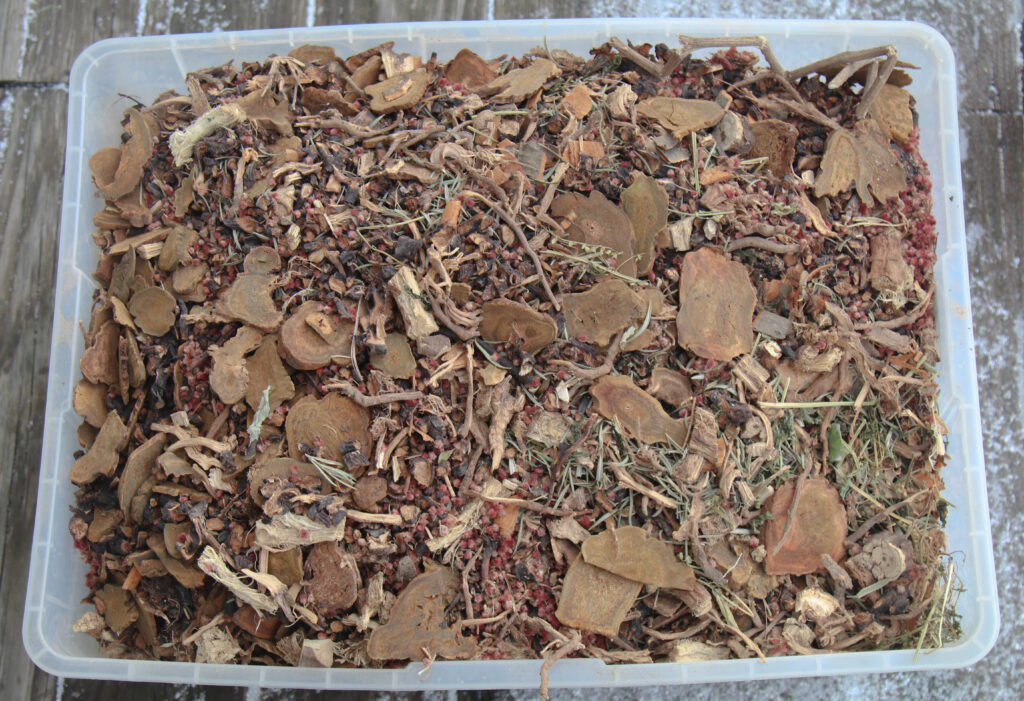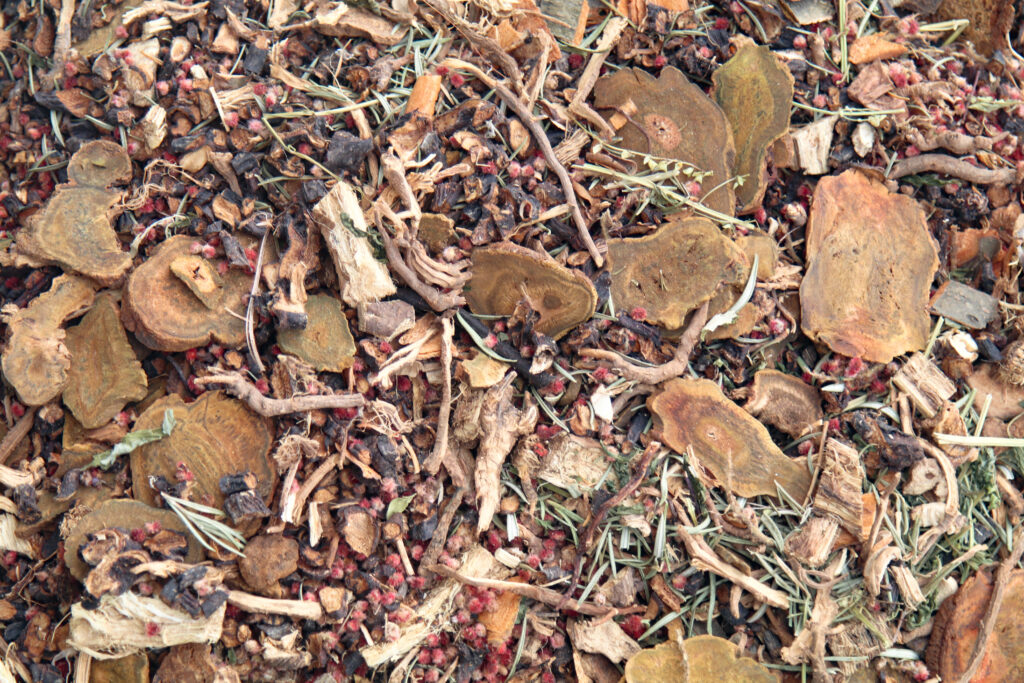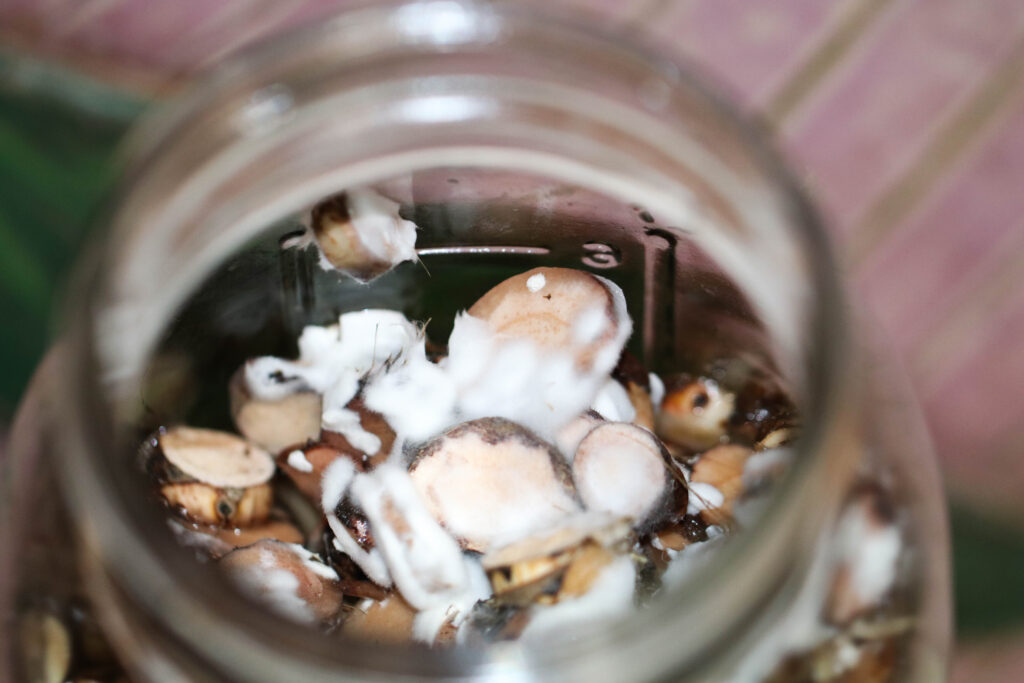
What Makes an Herb ‘Old?’
In a recent post, I wrote about getting rid of old herbs while organizing my apothecary. I received a number of questions asking me what determines how old is too old. There is no definite answer, and several factors come into play. This conversation is limited to raw herbs and is not about herbal preparations such as tinctures or syrups. Also, this is not an exhaustive list; rather, it is over-generalized. In the end, organoleptics (using one’s senses) are going to be the greatest determiner for most folks.
The Plant Material
There are hundreds of plants regularly used in herbal medicine, and each one is different in how long they maintain their medicinal viability. Their medicinal decay is predicated on numerous factors. One aspect is the material makeup of the plant itself. Some plant forms, such as seeds, are built to last longer. They have a tough outer coat and are designed for lying underground for years before breaking down.
Conversely, flower petals are often shed within hours or days, as their goal is to attract pollinators. In general, roots, seeds, and bark are made up of tougher, more durable plant material due to their function on the plant. With flowers, the petals usually deteriorate quicker than the calyx (the outer portion of the flower, protecting the petals. Think of the green portion of a rosebud. Hibiscus tea is the calyx portion of that flower.)
Leaves and stems have a lot of variability, depending on whether the plant is annual or perennial and the physical make-up of the material

The Medicinal Constituents
Another factor is the intended medicinal constituents. Some constituents, such as essential oils, tend to dissipate sooner than other chemical groups (hence their other name, volatile oils), such as alkaloids or saponins. With essential oils, the sniff test will often help determine if the plant still has enough to be a viable aromatic medicine. The other constituents are more difficult to detect.
How Well They Were Dried and Stored
Another important consideration is how well they were dried and stored. If a plant is properly dried (which varies according to the plant), it tends to retain more of its medicinal activity for longer. Poorly dried herbs will likely lose their medicinal luster more quickly (if the drying hadn’t destroyed it already).
Also, if a plant is powdered, it may lose its potency more quickly as more of the plant cells are exposed. This is especially true for plants with essential oils.
Storage is also important. The things that give plants life (sunlight, oxygen, heat, and moisture) are also responsible for their breaking down. I store most plants in plastic bags in plastic bins. Dry plants are rarely reactive with the plastic. I appreciate the convenience and appearance of herbs in glass jars, but this does not work for larger quantities of plants. Try to store herbs in a cool, darkish area with minimum exposure to sunlight, moisture, and quick temperature changes.
Other Considerations
Here are a few less often but important considerations. Do I have any plants that can replace the one I toss? This goes along with whether it is better to have a less active medicinal plant rather than none at all. And the corollary, can I find or afford a replacement with similar properties?
In other words, how important is this specific plant in your practice or personal medicine kit to have, and is a less potent version better than none at all?

Obvious Times to Discard
The most obvious time to discard is if the plant is moldy. Also, if it has a rancid, off-putting smell (as opposed to the potent natural aromas found in plants such as Chaparral or Valerian).
We Return to Organoleptics
Organoleptics is using your senses. Ultimately, it is the way I, and how I think many folks, determine whether to keep or chuck an herb.
Visual
What is the color of the plant material? Does it retain any of the color from when it was first dried? Has it become that bleached-out faded tan color many plants achieve over timeAroma
If it once contained essential oils, is the scent still detectable? Does it have a rancid or disagreeable aroma? Does it still have a fresh green smell?
Texture
Does the plant crumble easily when handled? Does it still retain the consistency of the fresh dried plant?
What to Do with Older Plant Material
When I find the plants too far gone to be useful as medicine, I compost them. But sometimes the plant is aged, but still has some medicinal viability. If I have plenty of it, I will usually give it away to students. If I don’t have enough, and it is a valuable plant to me, I will keep it around and may still use it.
Thoughts
Since there is generally no absolute deadline for when a plant has lost the last vestiges of its medicinal oomph, it is up to each individual to decide when it is time for the compost. I hope this has been helpful. ~7Song
